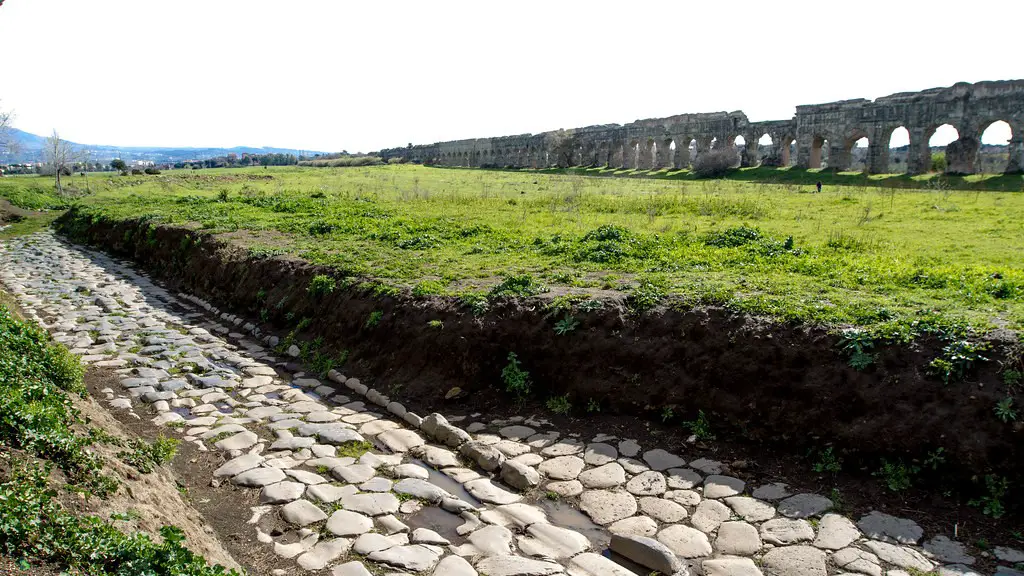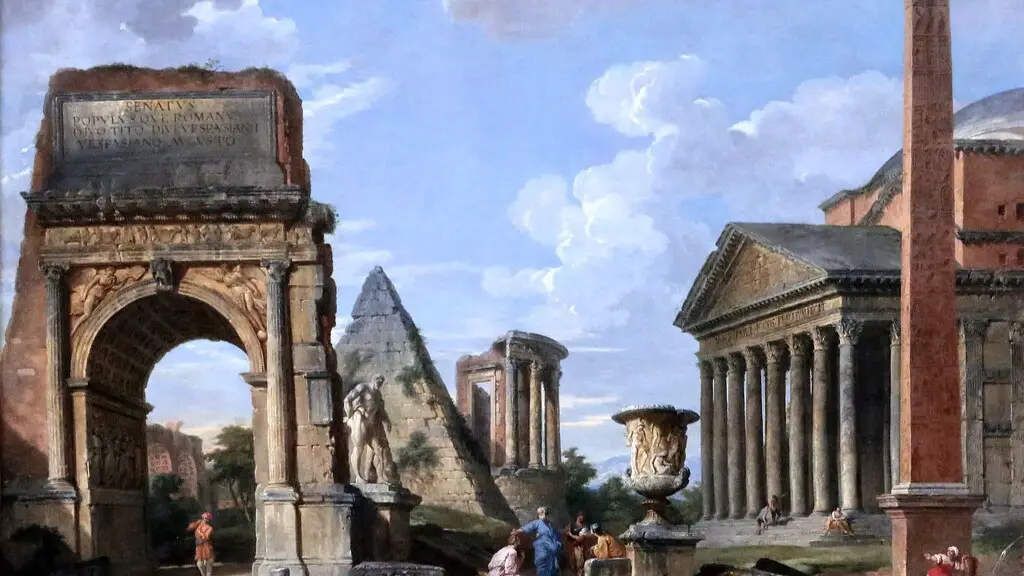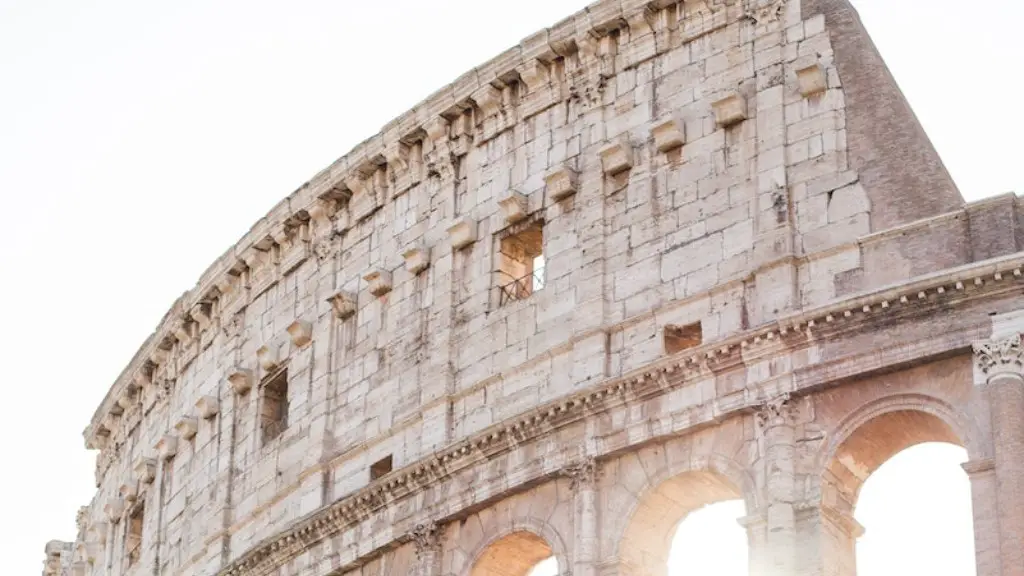Ancient Roman Clothing
The clothing of the Ancient Romans was an integral part of daily life in the Republic and Empire. It had to provide protection from the elements and any possible hazards, as well as being a form of ornamentation. While clothing styles changed over the centuries, from the days of the Republic to the height of the Roman Empire, the basic garments often remained the same.
The basic garment for men and women in the Ancient Roman world was the tunica, which usually reached the knee in length and had short or long sleeves. It was usually made of cotton, linen or wool, and was normally woven into two widths, with an overlapping front, to create a fold. Togas were the distinguishing insignia of Roman citizens and were worn mainly by upper-class men, though some women also wore them in special circumstances. The traditional toga was white in color and was made of wool. It was often draped around the body with a part gathered at the middle to form a cincture.
A common style of clothing worn by women in Ancient Rome was a long tunic with two sleeves, fastened with a belt at the waist and reaching to the feet. The tunic could be either plain or decorated. Women also wore a shawl known as the palla which was usually worn over the tunic to provide additional warmth. It was usually made from wool or linen and was either plain or embroidered with colourful designs.
In colder climates,women also wore a long cloak known as the sagulum to keep warm. This cloak was usually brightly coloured and decorated with embellishments such as fringe. Sandals, which were often made of leather or wood, were the primary form of footwear for both men and women in ancient Rome. However, wealthier citizens often wore boots and leather shoes.
It was common for both men and women to adorn their clothing with jewellery, including rings, necklaces and earrings. Gold, silver and bronze were the most popular metals used to create jewellery,though other materials such as bone, ivory, glass and amber were also used. Elaborate jewellery pieces were reserved for the wealthiest citizens, whereas simpler pieces were more common among the poorer citizens.
Clothing in Ancient Rome was also a home to fashion, with different styles and fabrics becoming popular among upper-class citizens. New garments, ornaments and accessories made from colorful and expensive fabrics were often showcased in banquets and festivals. The fashions of the time featured loose-fitting garments, which were often brightly coloured and heavily adorned with decorative embroidery and jewels.
The Clothing of Roman Slaves
The clothing of Roman slaves could be quite different from that of the Roman citizens, depending on their status. In general, slaves were expected to wear clothing made from poorer-quality materials and had fewer adornments or jewellery. The basic clothing of a slave was a simple tunic, either with short or long sleeves, and was usually made from rough cloth. While wealthier slaves could wear better-quality clothing, such as wool or linen, poorer slaves usually wore tougher fabrics such as sacking or burlap. Slaves were not allowed to wear the traditional toga, which was a sign of a Roman citizen.
Roman slaves who did much of the manual work around the house often wore lighter clothing to work in, such as a tunic made from linen or cotton. Slaves who performed heavier work such as farming, quarrying and mining worn thicker clothing to protect them from the elements and any hazards they may face. In colder climates, they often wore a cloak known as a paenula to keep them warm. This cloak was usually made of a cotton material and fastened at the neck with a clasp.
In some cases, slaves were not allowed to wear any type of footwear at all, though in other cases they could wear simple leather sandals. Slaves were not allowed to wear any jewellery or adornments, as this was a sign of wealth and was seen as a sign of rebellion. In some cases, slaves were even branded with their owner’s mark or symbol. This was done to make sure the slaves could not easily escape or be stolen from their owner.
The Clothing of Roman Soldiers
The clothing of Roman soldiers was designed to provide protection from the elements and in battle. The standard garment for soldiers was the armor, which was designed to protect the wearer from spears, arrows and swords. The armor was usually made from bronze or iron and fit tightly to the body, with chainmail or leather added for extra protection. Roman soldiers also wore a leather helmet, which had felt lining and cheek pieces to protect the face. Over the armor, soldiers would often wear a dark-coloured cloak known as a sagum to keep them warm and shield them from dust and mud while they were travelling.
Boots were an essential piece of soldiers’ clothing, as it was important to keep their feet dry and protected in the cold and wet conditions of the battlefield. For protecting their hands and arms in battle, soldiers wore bracers and iron gauntlets. Shields were a common item of clothing for Roman soldiers, which provided protection from arrows and swords. These shields were usually made from wood, with iron edging, or from bronze and iron. Swords, daggers and spears were also commonly carried by soldiers, depending on the situation.
The clothing of Roman soldiers was designed to be practical and durable, as soldiers often spent long periods of time on the battlefield and in harsh environments. This clothing was also designed to be light and comfortable, so the soldiers could move quickly and easily during battle. In addition, these garments often had bright colours and ornaments to identify the legion or the soldier himself, which helped to boost morale and pride in their place of service.
Symbolic Meaning of Ancient Roman Clothing
In Ancient Rome, clothing had a great symbolic meaning. The toga was seen as a sign of Roman citizenship, and was worn by upper-class citizens and was often embroidered with their symbol or crest. The colour of the clothing was also seen as important, as bright colours were seen to be a sign of power and wealth, while dull, more subdued colours were seen as a symbol of humility and piety. It was also believed that the clothing of a Roman could tell a lot about the kind of person they were, as certain garments or fabrics could indicate a person’s status or profession.
In addition, clothing was also seen as a way of expressing oneself, with people wearing clothing to distinguish themselves from others. This could also be seen as a way of expressing their beliefs and values. For example, some people wore their clothing as a sign of their allegiance to their gods or to represent their political beliefs.
Finally, clothing in Ancient Rome was also seen as a way to display one’s wealth and status. Wealthy citizens were more likely to be able to afford clothing made from expensive materials and were able to embellish their clothing with jewellery and other decorations. This allowed them to stand out from the crowd, while at the same time sending a message of their wealth and social standing.
Conclusion of Ancient Roman Clothing
It is clear from the evidence that clothing in Ancient Rome played an important role in society. Not only was it a practical necessity, to provide protection from the elements, but it also held a great symbolic meaning for the people of the time. It was used as a way to display wealth and status, to express one’s values and beliefs, and even to set people apart from others. The clothing of Ancient Rome was an integral part of their daily life, and it had a great influence on their culture and society.



